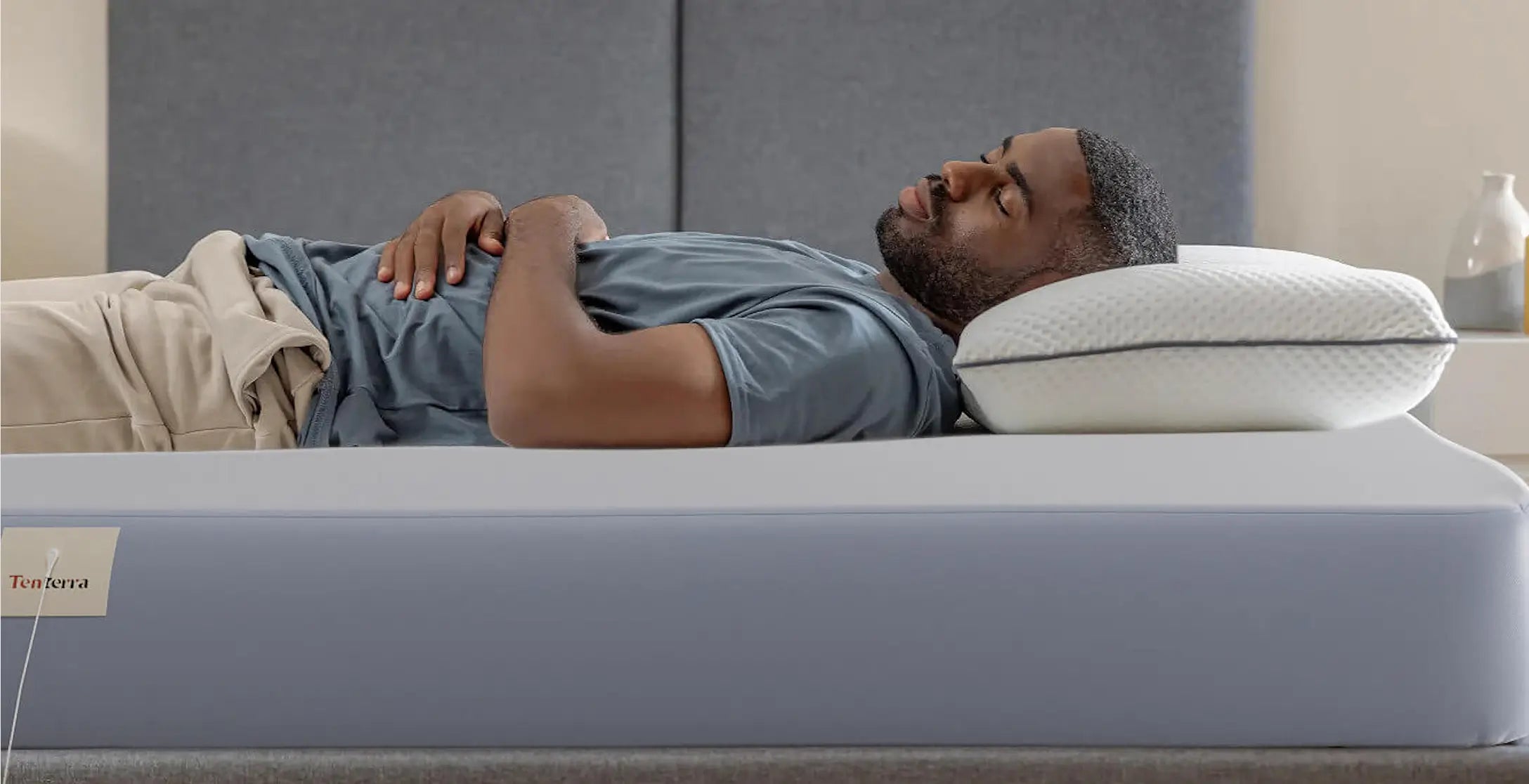
Grounding vs. Earthing: Understanding the Differences and Benefits
Share
In the wellness world, "grounding" and "earthing" are terms you might have heard a lot lately. For some, they’re buzzwords, but for those who’ve tried them, they’re much more than that. Both practices involve connecting with the Earth's natural energy, supporting our health and balance, yet they differ in how they’re practiced and experienced. If you've been curious about grounding and earthing but aren't sure where to start, let’s explore their nuances and look at how each could fit into your life.
What is Earthing?
Earthing is all about direct physical connection with the Earth's surface—think of the soothing feeling of walking barefoot on grass or sand. It’s this simple act that allows us to absorb electrons from the Earth directly through our skin. Many people who’ve embraced earthing will tell you that it helps them feel relaxed, rejuvenated, and more connected to nature.
Historically, humans spent most of their time outdoors, close to the ground. Today, however, our lives are full of buildings, shoes, and layers of material that separate us from the Earth. Earthing is an attempt to reconnect with this lost contact. People often report better mood, deeper sleep, and less physical discomfort after making it a regular part of their wellness routine.
Benefits of Earthing
-
Reduces Inflammation: When you make direct contact with the Earth, electrons from its surface enter your body, potentially reducing inflammation by neutralizing free radicals.
-
Promotes Better Sleep: Many people find that earthing helps reset their natural sleep cycles. Regular time outdoors, barefoot or in contact with the ground, can support a balanced circadian rhythm for more restorative sleep.
-
Improves Mood: There’s something undeniably calming about being barefoot on the grass or sand. Earthing may help reduce stress and anxiety, giving you a mental lift that can improve your mood.
What is Grounding?
Unlike earthing, grounding doesn’t require you to be outside. Instead, grounding uses conductive devices like grounding mats, sheets, or rods to create a connection with the Earth’s energy while you’re indoors. Imagine being able to bring the natural benefits of the Earth right into your bedroom or workspace—that’s the magic of grounding. These products plug into a grounded outlet, making it possible to enjoy the effects of earthing without having to step outside.
Grounding is a great alternative for those who live in cities or colder climates, where walking barefoot outdoors may not always be practical. I personally find grounding mats perfect for winter months or busy days when I’m stuck at my desk, keeping me connected to the Earth without needing to venture outside.
Benefits of Grounding
-
Convenience: Grounding devices make it easy to stay “connected” without stepping outdoors, which is a game-changer for those with busy lives or limited access to nature.
-
Accessibility Year-Round: Grounding sheets or mats allow you to ground indoors regardless of the weather, location, or season, making it easier to stick with grounding consistently.
-
Consistent Benefits: Imagine the comfort of being grounded while you sleep or work! With grounding sheets or mats, you can experience a steady, calming connection to the Earth’s energy that doesn’t require any extra effort.
Grounding vs. Earthing: Key Differences
So, what exactly sets grounding apart from earthing? Here’s a quick comparison to highlight the unique aspects of each.
Aspect Earthing (Direct Connection) Grounding (Indirect Connection)
| Definition | Physical contact with Earth’s surface (e.g., grass, sand, soil) | Use of conductive devices (e.g., sheets, mats) that connect to a grounded outlet |
| Location Requirement | Outdoors, on natural surfaces | Indoors, with grounding equipment |
| Connection Type | Direct, through skin contact | Indirect, using conductive materials |
| Accessibility | Limited by weather and location | Year-round, anywhere with a grounded outlet |
| Best For | People who enjoy being outside and have access to natural settings | Those needing grounding benefits indoors, including urban or colder areas |
How Grounding and Earthing Work
Both grounding and earthing work on the principle of connecting to the Earth’s electrons, but each has its own approach. The Earth’s surface is full of free electrons that carry a negative charge. Whether you’re standing barefoot on the grass or lying on a grounding sheet indoors, these electrons flow into your body and can help balance your electrical charge, reducing free radicals and supporting overall health.
What fascinates me about grounding and earthing is the simplicity and power of these electrons, which can impact everything from mood to inflammation levels. In some ways, it’s like bringing a bit of nature’s healing right into your everyday life.
The Science of Grounding and Earthing
Studies are beginning to back up what many people experience with grounding and earthing. Here are some interesting findings:
-
Inflammation Reduction: Research published in the Journal of Inflammation Research suggests that grounding can significantly reduce inflammation, especially in people who suffer from chronic pain or fatigue. Reducing inflammation may help with muscle recovery and even daily comfort.
-
Better Sleep and Less Pain: Another study from the Journal of Alternative and Complementary Medicine reported that people who grounded themselves while sleeping experienced better sleep quality and reduced pain.
-
Blood Viscosity: Research has shown that grounding reduces blood viscosity, which can support better cardiovascular health. Lower blood viscosity means improved circulation, something that can have a big impact on our well-being.
Difference Between Earthing, Grounding, and Neutral
Sometimes, grounding and earthing can get mixed up with electrical terms like “neutral.” Let’s break it down:
-
Earthing: In wellness, this refers to direct physical contact with the Earth’s surface. In electrical systems, it’s about grounding electrical devices to prevent shocks.
-
Grounding: For wellness, grounding means using indoor devices to mimic the effects of earthing. In electrical systems, grounding ensures a safe path for electricity to return to the ground.
-
Neutral: In electrical terms, neutral refers to a balanced point in a circuit, maintaining stability in voltage. Although not directly related to wellness, a sense of “neutrality” is what many people feel after grounding or earthing.
Earthing vs. Grounding: Which is Right for You?
Ultimately, whether you choose grounding or earthing comes down to your personal preferences and lifestyle. Here’s when each might be a great fit:
-
Earthing is ideal if you love the outdoors and have access to natural spaces. There’s something deeply satisfying about connecting with the ground directly, and you may feel the benefits of grounding in an almost meditative way.
-
Grounding is a fantastic option for those who want indoor access to the benefits of earthing. Grounding sheets, mats, and blankets make it possible to ground yourself in any room, whether you’re at your desk or getting ready for bed.
For many, combining both practices offers a flexible and balanced approach. Use grounding devices during your indoor hours, and when you can, step outside for a few minutes of earthing.
Easy Ways to Include Earthing and Grounding in Your Routine
-
Morning Walks: I love starting the day with a barefoot stroll, connecting with the Earth for a few minutes each morning. It’s a peaceful, grounding way to begin the day.
-
Grounding Sheets for Sleep: One of my favorite discoveries has been grounding sheets. Having the benefits of grounding while I sleep has been a game-changer for my energy levels and overall mood.
-
Work with a Grounding Mat: Grounding mats make it easy to bring the benefits of grounding right to your desk. I keep mine at my feet while working, helping me feel balanced and centered throughout the day.
-
Test Your Grounding Sheets: Many grounding sheet brands offer testers to check conductivity, so you’ll know if your sheets are still providing benefits after repeated washing.
-
Rotate Earthing and Grounding: Enjoy outdoor earthing when you can, but grounding sheets and mats are excellent for when going outside isn’t possible or convenient.
Frequently Asked Questions (FAQ)
1. Is earthing more effective than grounding?
It depends on personal preference. Some feel a stronger connection through direct earthing, while others enjoy the convenience and consistency of grounding indoors.
2. Can I use both grounding and earthing?
Absolutely! Many people combine both, grounding indoors during work or sleep and earthing outdoors when possible for a well-rounded approach.
3. How long should I spend grounding or earthing?
You can experience benefits in as little as 20–30 minutes a day, but more time can enhance the effects. I try to incorporate both practices regularly, and it’s helped me feel more balanced and calm.
4. Is there any risk to grounding or earthing?
Both practices are generally safe. When using grounding devices, just ensure you follow product instructions, especially when connecting to grounded outlets.
Conclusion: Embracing Grounding and Earthing for a Balanced Life
Whether you’re drawn to grounding indoors or earthing outdoors, both practices offer valuable ways to reconnect with the Earth. By understanding the unique aspects of grounding and earthing, you can make an informed choice to fit your routine and wellness goals.
Personally, grounding and earthing have been small but meaningful additions to my life, and they offer a welcome balance to the hustle of daily life. Give both
practices a try and see how they work for you. Whether it's a morning walk in the grass or a grounding mat under your desk, these simple actions can make a surprising difference.
Grounding and earthing connect us back to the Earth in ways that may feel small but can have profound effects on our well-being. With these practices, we’re reminded of the power of nature, helping us feel more balanced, energized, and connected in our daily lives. So, take a moment to ground yourself—indoors or out—and let the Earth’s natural energy support you in living a healthier, more centered life.
Consult our discounts on Wethrift.


